Before making your purchase, it’ s essential to consider how your CNC router will be used in your production process, as this will determine the level of precision, automation, and scalability you require. The right machine should not only meet your immediate demands but also offer flexibility for future growth. This article will provide an overview of the key considerations that will help you choose the CNC router best suited to your business, from machine configuration and budget planning to manufacturer evaluation and future expandability.
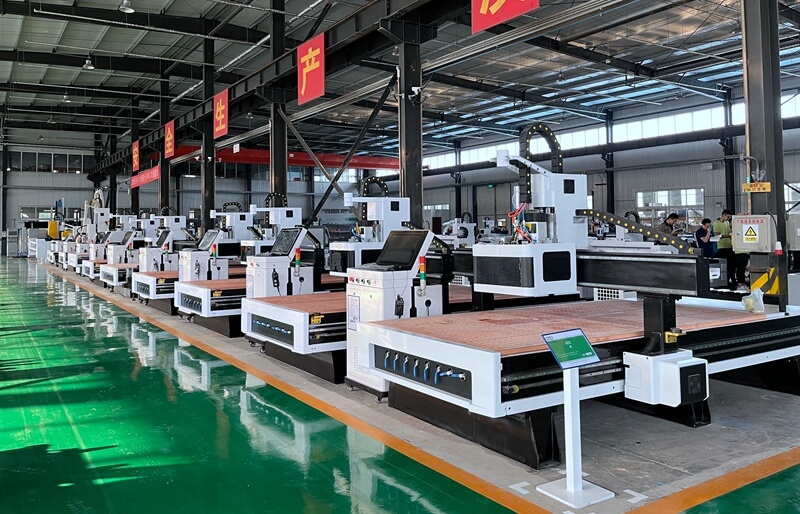
Purchasing a CNC router is a significant investment that can greatly enhance your manufacturing capabilities, whether you’re working in wood, metal, plastics, or composites. However, with the vast range of CNC routers available on the market, it’ s important to know which features and specifications align with your production needs. Understanding factors such as machine size, spindle power, material compatibility, and control systems is beneficial to ensuring that the machine you choose is both efficient and cost-effective. Additionally, evaluating the available support and software integration options can significantly influence your CNC router’s long-term performance.
Understanding CNC Router
CNC routers are capable of performing a wide variety of tasks, from basic cutting and engraving to more complex processes like 3D carving and milling. Whether used for small-scale projects or large industrial applications, CNC routers help businesses optimize their manufacturing processes by automating intricate and time-consuming tasks. Here is more information about it.
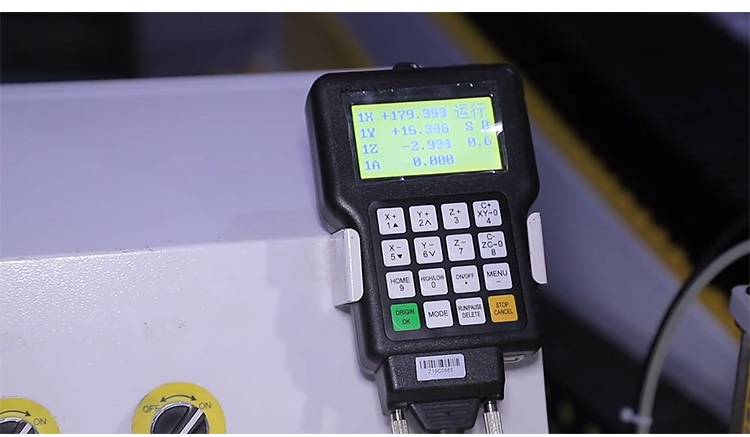
Basic Knowledge Of CNC Routing
CNC routing is a method of cutting, carving, or shaping various materials through the use of a computer-controlled machine. CNC, which stands for Computer Numerical Control, allows for precise automation in the manufacturing process. The machine reads digital instructions from a design file, often a CAD (Computer-Aided Design) file, and uses these commands to control the movement of the cutting tool. This level of precision makes CNC routers ideal for producing detailed and consistent cuts, whether for one-off projects or mass production.
CNC routers are highly versatile and can be used to work with a wide range of materials, including wood, metal, plastic, foam, and composites. The key advantage of CNC routing is the ability to perform complex operations with greater accuracy and speed compared to manual methods. This leads to increased productivity, reduced material waste, and higher-quality finishes.
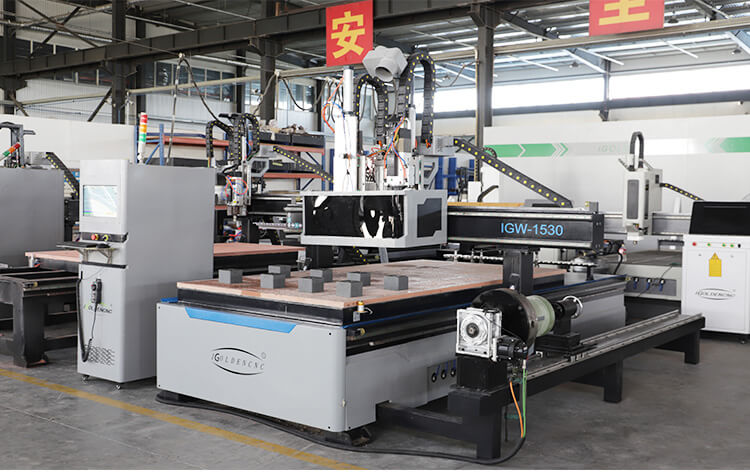
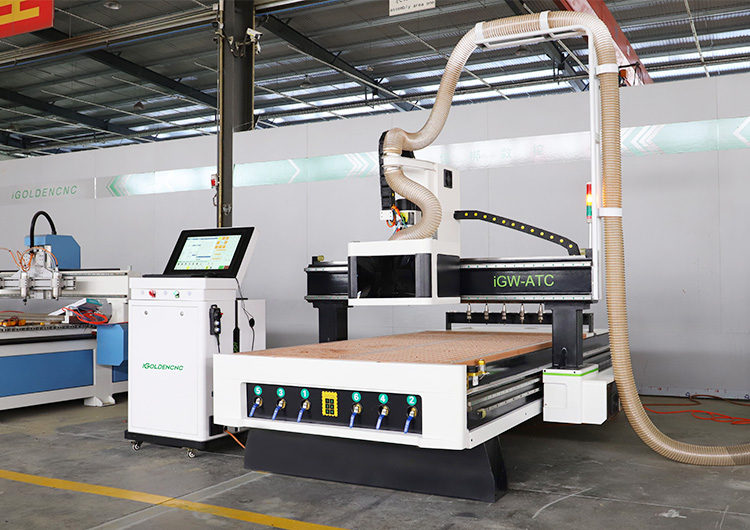
Types Of CNC Routers
CNC routers are classified based on the number of axes along which the cutting tool can move. The more axes a machine has, the greater its flexibility in handling complex designs. Here’ s a breakdown of the main types:
- 3-Axis CNC Router: A 3-axis CNC router operates on three basic axes: the X-axis (left and right), Y-axis (forward and backward), and Z-axis (up and down). This configuration allows the machine to move the cutting tool in three directions, which is ideal for working on flat materials and relatively simple designs. Common applications of 3-axis CNC routers include cutting, engraving, and milling on surfaces like wood, plastics, and metal sheets. While versatile, the 3-axis CNC machine is limited in handling more complex shapes or parts that require access from multiple angles.
- 4-Axis CNC Router: The 4-axis CNC router mentioned here is also called a rotary axis CNC router. It adds a rotational axis, typically referred to as the A-axis, to the standard X, Y, and Z movement. This rotational movement allows the material to rotate while being worked on, enabling the machine to perform more intricate operations, such as carving and shaping cylindrical objects like table legs, statues, or complex patterns on curved surfaces. With the additional axis, a 4-axis CNC router offers better flexibility when machining a workpiece compared to a 3-axis CNC router.
- 5-Axis CNC Router: The 5-axis CNC router is the most advanced and versatile machine, providing full rotational control and movement in five directions. It includes all the movements of a 3-axis CNC router, as well as two additional axes, which allow the cutting tool to approach the material from virtually any angle. This enables the machine to work on complex 3D workpieces with high precision. With a 5-axis CNC router, you can cut intricate details on multiple sides of a workpiece without needing to reposition the material, significantly reducing production time.
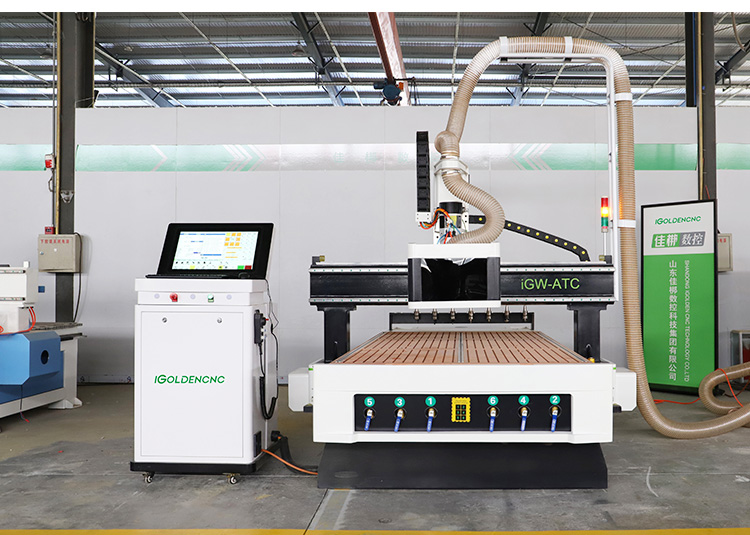
Defining Your CNC Router Requirements
When choosing a CNC router, it’ s important to clearly define your specific needs to ensure that the machine you select aligns with your production goals. Here are the key factors to consider when defining your CNC router requirements:
Determining Application Requirements
The first step is to determine what type of work you’ll be performing with the CNC router. Understanding the scope of projects you plan to undertake is beneficial in determining the right CNC router. Ask yourself the following:
- What kind of work will you perform? Are you primarily cutting, engraving, milling, or performing more intricate 3D sculpting tasks?
- Production volume: Are you producing one-off custom pieces, small batches, or running continuous production lines?
- Complexity of designs: Do you need a simple CNC router for flat designs, or will you require advanced multi-axis capabilities for 3D work?
- Industry requirements: Specific industries like woodworking, metalworking, or signage and prototyping may have unique demands for precision, speed, or complexity, which impacts the type of machine required.
By identifying the primary application, you can narrow down CNC routers with the necessary features, such as spindle power, axis configuration (3-axis, 4-axis, 5-axis), and automation options.
Material Compatibility
Different CNC routers are optimized for specific materials, so understanding your material needs will help you choose the right machine. Here’ s how to assess material compatibility:
- Wood: Most CNC routers are capable of working with wood, but softer woods may require less spindle power, while hardwoods demand higher power for precision cutting.
- Metal: Metalworking requires a robust CNC router with high spindle power and rigidity, especially if you’ re cutting harder metals like steel or titanium.
- Plastics and Composites: These materials require CNC routers with appropriate feed rates and cutting speeds to prevent melting or rough finishes.
- Foam and Soft Materials: These require lower spindle power but benefit from high-speed movements for quick processing.
Understanding the material type ensures that the CNC router you choose offers the appropriate cutting tools, power, and precision for consistent performance.
Size And Workspace
The size of the CNC router and its workspace depends on the dimensions of the materials you’ ll be using and the available space in your production facility.
- Worktable size: Determine the largest material size you plan to cut or engrave. This will help you choose a CNC router with a worktable that can accommodate the full dimensions of your material without the need for repositioning.
- Machine footprint: Consider the physical space available in your workshop or factory. Larger CNC routers require more floor space, so measure your available area to ensure the machine fits comfortably, with room for the operator to move and access the machine safely.
- Ventilation and Dust Collection: Make sure your workspace has adequate ventilation, especially when cutting wood or materials that generate dust and debris. CNC routers often need dust collection systems, which also require space.
Matching your CNC router’ s size with your material size and available workspace ensures efficient workflow without disrupting production or crowding your work area.
By carefully assessing your application requirements, material compatibility, workpiece size and workspace, you’ ll be well-prepared to choose a CNC router that aligns with your production needs, providing both efficiency and versatility for long-term use.
Understanding The Performance And Configuration Of A CNC Router
Choosing the right CNC router requires a clear understanding of both its performance capabilities and optional configuration. These two aspects play a significant role in how well the machine meets your production needs and how efficiently it operates over time.
Technical Specifications
- Machine Stability and Rigidity: The rigidity of the machine’ s frame and components plays a big role in its performance, especially when cutting hard materials. A well-built CNC router with a strong, stable frame minimizes vibrations during operation, leading to smoother cuts and greater precision. Steel and cast iron offer superior rigidity and durability, making them ideal for heavy-duty cutting operations.
- Spindle Power: The spindle is the heart of the CNC router, and its power (measured in kilowatts or horsepower) directly affects the type of materials you can work with and the speed of your cutting processes. For example, working with hardwood, metal, or composite materials typically requires a high-powered spindle, while softer materials like plastics and foam need lower power. A stronger spindle also increases cutting speed, reducing overall production time.
- Cutting Speed and Feed Rate: Cutting speed refers to how fast the cutting tool moves through the material, while feed rate is the speed at which the material is fed into the tool. High-performance CNC routers allow you to adjust both settings to achieve optimal precision and efficiency for different materials and project types.
- Precision and Accuracy: Precision is a key concern when working on intricate designs, as it affects how closely the final product matches the intended design. Factors like cutting tolerance, repeatability, and resolution (the smallest increment of movement) determine how accurate the CNC router is, making it an important consideration in industries requiring fine detail or tight tolerances.
- Resolution and Positioning Accuracy: Resolution and positioning accuracy determine the machine’ s ability to move the cutting tool to precise locations and make detailed, intricate cuts. These specifications impact the level of detail and quality of the final product. A CNC router with high resolution can perform finer, more detailed work, which is useful for projects requiring intricate designs or tight tolerances.
Software Notes
- CAM Software Compatibility: Ensuring that the CNC router is compatible with widely used CAM software is beneficial for smooth workflow integration. Popular CAM software like Fusion 360, VCarve, or Mastercam must seamlessly integrate with your CNC router, allowing it to interpret design files efficiently. Compatibility with industry-standard formats like G-code is a key factor, as it ensures that the CNC router can process a variety of file types and work across different design environments. Choosing a CNC router with robust CAM software compatibility enables greater flexibility in design and production.
- User Interface and Ease of Programming: A user-friendly interface reduces the learning curve and makes it easier to input design files, adjust machine settings, and control operations. For beginners, CNC routers with simplified, intuitive UIs are ideal, while more advanced users may prefer interfaces with customizable options to fine-tune the machine’ s performance. In addition, ease of programming allows users to set up new jobs without extensive coding knowledge, empowering them to quickly modify or update cutting paths as needed, thus improving workflow efficiency.
- Tool Path Simulation: Tool path simulation allows operators to preview the cutting process before running the machine. By visualizing how the cutting tool will interact with the material, users can identify potential issues and make adjustments to avoid costly mistakes. This feature improves precision and reduces material waste by providing a clear view of the toolpaths in a virtual environment. Additionally, advanced simulations can show estimated cutting times and predict tool wear, further enhancing production planning and efficiency. A CNC router with tool path simulation capabilities ensures higher-quality outcomes and minimizes errors during operation.
Machine Configuration Options
- Automatic Tool Changer (ATC): An auto tool changer (ATC) allows the CNC router to switch between various tools—such as different drill bits or cutting heads—without manual intervention. This significantly reduces downtime and enables the machine to handle complex, multi-step jobs in one continuous operation. ATC ensures smooth workflow and improves overall efficiency, especially in operations that require multiple tool types.
- Dust Removal System: A dust removal system is a critical accessory for CNC routers, especially when cutting materials like wood or composites that produce a significant amount of dust and debris. These systems help maintain a clean work environment by vacuuming up dust directly from the cutting area, ensuring both the machine and workspace stay free of debris. This not only improves operator safety by reducing airborne particles but also prevents dust from accumulating in the machine’ s components, which can extend the lifespan of the router and ensure more consistent cutting performance.
- Coolant System: Coolant systems play an important role in CNC routers that handle materials such as metals, where high-speed cutting generates significant heat. By circulating coolant over the cutting tool and material, these systems help manage heat build-up, preventing tool wear and material damage. Coolant systems can help in extending tool life while maintaining optimal cutting conditions.
By understanding both the performance factors and configuration options of a CNC router, you can choose the right machine that meets your production requirements and ensures a balance of precision, efficiency, and long-term durability.
Summarize
Buying a CNC router is a significant investment that requires careful planning and consideration of multiple factors. This article discusses the information you need to know before buying a CNC router from multiple aspects, and each aspect plays a role in making the right choice. By taking the time to assess these factors and doing thorough research, you’ll be well-equipped to choose a CNC router that enhances your production efficiency and provides a strong return on investment.

IGOLDEN BLOG
Thank you for visiting the iGOLDENCNC website. iGOLDENCNC is the professional supplier of CNC machinery application solution, within the business of producing and selling CNC machinery and accessories.